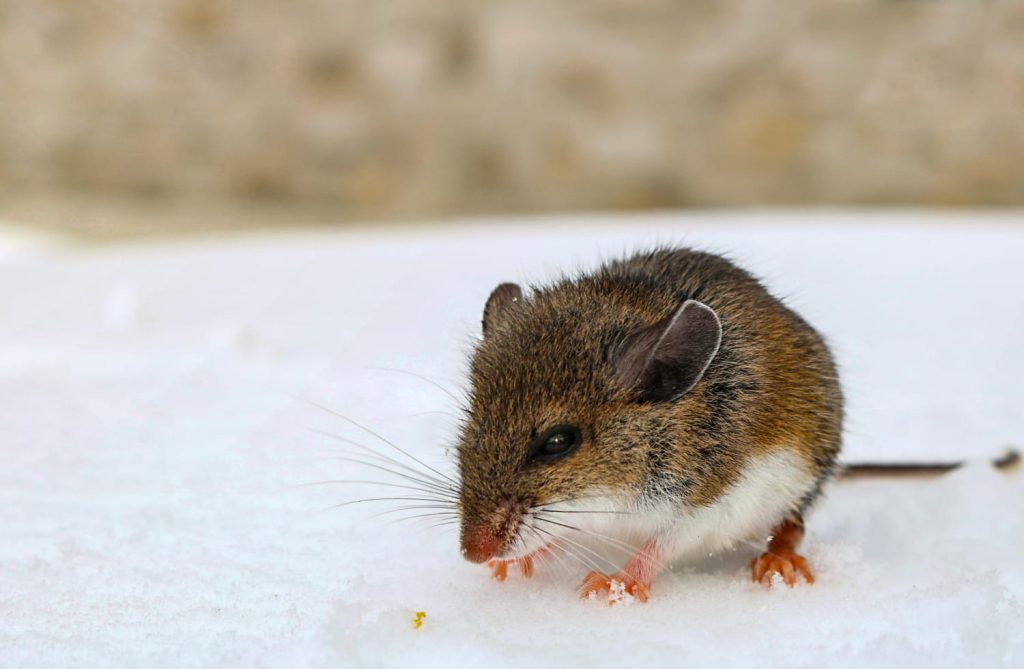Arizona public health officials are warning that the hantavirus, which spreads from rodents to humans, is causing a rise in a deadly pulmonary syndrome, with seven confirmed cases and three deaths in the past six months, according to the Arizona Department of Health Services. Recent health alerts.
Most cases of hantavirus are reported in the Western and Southwestern U.S. Most states, including California, typically report one to four cases per year. Two people in California have been infected with hantavirus this year.
There is no specific treatment or vaccine to prevent infection.
Arizona is One of the countries with the highest total number of reported infections This is the first hantavirus outbreak in the United States since 2019, according to the Centers for Disease Control and Prevention.
From 2016 to 2022, 11 cases of hantavirus in Arizona Four were scheduled for 2016, two for 2017, four for 2020 and one for 2022, according to the Arizona Department of Health Services.
“Hantaviruses are rare but important causes of severe and potentially fatal respiratory infections,” said Dr. Aaron Glatt, chief of infectious diseases at Mount Sinai South Nassau Hospital in Long Island, New York.
“The disease is transmitted by a variety of rodents, particularly deer mice, and although it can cause a mild illness, it causes fatal disease in a significant proportion of infected people,” he said.
In addition, San Diego County The California Department of Public Health is reporting increased activity of hantavirus-infected rodents this year, with 17 cases of hantavirus infection in Western Harvest Mice. Overall, hantavirus activity can fluctuate from year to year, and hantavirus activity in the U.S. this year does not appear to be more than usual, the California Department of Public Health said.
Why are Arizona’s cases increasing?
The CDC reports 850 cases from 1993 to 2021about 30 cases per year.
Trish Reese, public information officer for the Coconino County Health and Human Services Department, said the increase in cases in Arizona could be due to changes in rodent populations, which fluctuate from season to season and year to year.
Cases can occur at any time, but they are more prevalent in the summer because rodents are more active and more people are spending more time outdoors and going into enclosed spaces like sheds and barns, which increases their exposure to rodents, Reese said.
“Weather can have complex effects on hantavirus occurrence. For example, heavy spring rains can increase food resources for deer mice, which in turn can increase rodent populations. However, extreme heat has not been linked to increased hantavirus activity,” the California Department of Public Health said.
Experts speculate that climate change, including the extreme heat currently gripping the county, could be part of the cause.
Dr. Camilo MoraA professor at the University of Hawaii at Manoa’s School of Geography and Environmental Sciences says humans aren’t the only ones who seek shelter when it’s too rainy or hot outside: other animals also look for places to escape harsh weather, especially mammals that carry disease.
His previous the study It found that more than half of infectious diseases affecting humans could be exacerbated by climate change.
“Many disease-carrying species migrate with climate change, so it’s difficult to conclude that climate change is the cause in any particular case, but climate change has all the characteristics to cause vector-borne disease outbreaks,” he said.
Dr. Scott Roberts, associate medical director for infection prevention at Yale University School of Medicine in New Haven, Connecticut, added that fluctuating environmental conditions can lead to changes in animal populations, and increases in the population of rodents, where hantavirus spreads, would inevitably increase the risk of infection for humans.
Glatt said it’s possible that infected people were made worse by dehydration or other factors.
According to the CDC, about 94% of hantavirus infections occur west of the Mississippi River.
Hantavirus Symptoms
Hantavirus-containing particles are released into the air when deer mouse urine, saliva, or feces are stirred up. Hantavirus Pulmonary Syndrome (HPS).
The syndrome was first recognized in 1993 when a mysterious illness infected Navajo people who lived on the border between New Mexico and Arizona, according to previous studies. reportApproximately 80% of those infected died at that time.
Symptoms may appear 1 to 8 weeks after contact with an infected rodent.
The disease is divided into two stages.
In the early stages of the disease, people may suddenly start complaining of non-specific symptoms.
- heat.
- Malaise.
- Muscle pain — especially in the thighs, back and shoulders.
- Nausea, vomiting, abdominal pain.
If left untreated, the disease can become more serious and infect the lungs, causing blood vessels to “leak”, leading to a buildup of fluid in the respiratory system and causing shortness of breath, chest tightness and coughing, the British Medical Association said. American Lung Association.
About 38% of people who develop pulmonary symptoms will die from the disease.
How to Prevent Hantavirus
“The best way to prevent the spread of this disease is to carefully disinfect and clean up rodent excrement and avoid contact with rodents,” Glatt said.
of Wyoming Department of Health They are warning people to be careful when doing their spring cleaning, and a spokesman confirmed they have not seen any unusual behaviour among residents in the state so far this year.
Experts say opening and cleaning rural sheds, barns, sheds and sheds that have been closed over the winter could increase the risk of a deer mouse infestation.
In 2012, a hantavirus outbreak among guests staying in the tent huts sickened at least 10 people and killed three. Yosemite National Park.
The Wyoming Department of Health is warning people to be careful when entering any space that has been closed and unoccupied for an extended period of time and to ventilate the space for 30 minutes.
If the area is very dirty or has a lot of rats, be extra careful by putting on gloves, shoe covers, coveralls and an N95 mask before cleaning.


